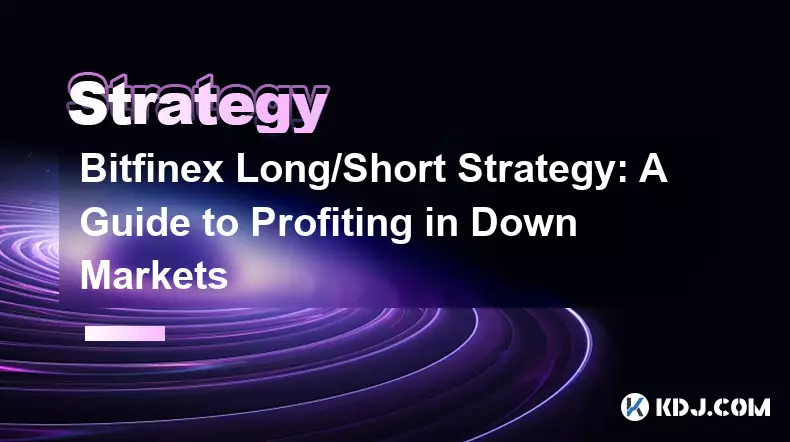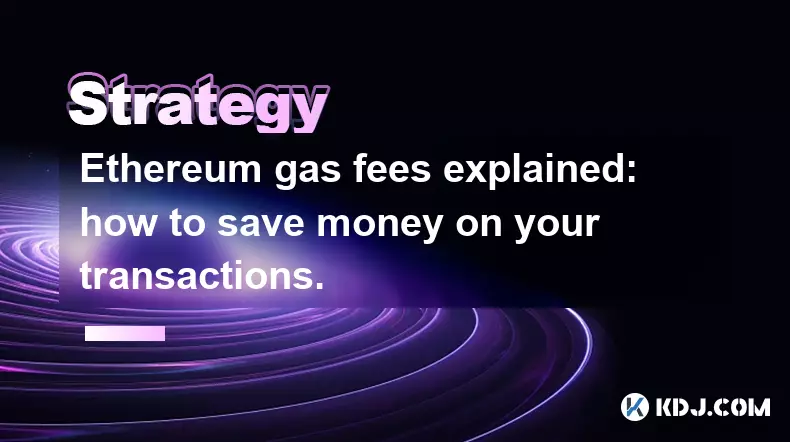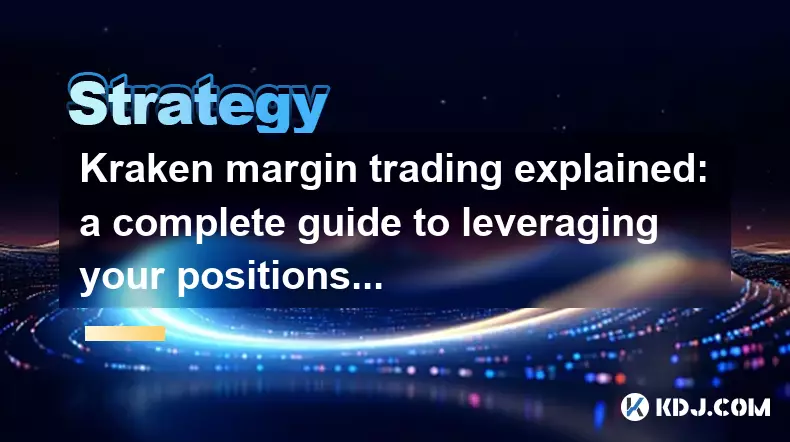-
 bitcoin
bitcoin $102182.982207 USD
-0.92% -
 ethereum
ethereum $3438.744518 USD
0.12% -
 tether
tether $0.999933 USD
0.02% -
 xrp
xrp $2.405093 USD
0.05% -
 bnb
bnb $956.306114 USD
-0.53% -
 solana
solana $153.028851 USD
-1.23% -
 usd-coin
usd-coin $0.999800 USD
-0.03% -
 tron
tron $0.294898 USD
-1.08% -
 dogecoin
dogecoin $0.171428 USD
-0.58% -
 cardano
cardano $0.551186 USD
-1.15% -
 hyperliquid
hyperliquid $38.755878 USD
0.04% -
 chainlink
chainlink $15.298460 USD
-0.05% -
 bitcoin-cash
bitcoin-cash $516.067428 USD
1.68% -
 stellar
stellar $0.280726 USD
-0.42% -
 zcash
zcash $518.919369 USD
18.01%
Bitfinex Long/Short Strategy: A Guide to Profiting in Down Markets
The Bitfinex long/short ratio helps gauge market sentiment, serving as a contrarian indicator when extremes signal potential reversals.
Aug 30, 2025 at 09:55 am

Understanding the Bitfinex Long/Short Ratio
1. The Bitfinex long/short ratio reflects the proportion of long positions to short positions held by traders on the exchange. This metric is derived from the funding rates and open positions across perpetual swap contracts. A higher ratio indicates more traders are betting on price increases, while a lower ratio suggests growing bearish sentiment. Monitoring this data allows traders to gauge market sentiment in real time.
2. Traders often misinterpret the long/short ratio as a direct signal for price movement. However, it functions more effectively as a contrarian indicator. When long positions dominate, especially beyond historical averages, it may signal over-leveraged bullishness, increasing the risk of liquidations during pullbacks. Conversely, an overwhelming number of shorts can set the stage for sharp upward moves due to short squeezes.
3. The ratio is not static and fluctuates based on volatility, macroeconomic news, and whale activity. Sudden shifts in the ratio often precede significant price swings. For instance, a rapid decline in long positions may indicate fear-driven exits, potentially marking a bottom if the selling pressure exhausts itself. Understanding these dynamics helps traders position themselves ahead of reversals.
4. Access to Bitfinex’s long/short data is available through their API or third-party analytics platforms. Integrating this data into trading dashboards enables real-time monitoring. Some traders build automated alerts when the ratio crosses predefined thresholds, allowing faster reaction to emerging trends.
Shorting Strategies During Bearish Cycles
1. One effective method involves entering short positions when the long/short ratio spikes above 2.5, particularly after a prolonged rally. This scenario often reflects excessive optimism, making the market vulnerable to corrections. Using leverage responsibly—typically 3x to 5x—helps manage risk while maximizing exposure to downward moves.
2. Pairing the long/short data with on-chain metrics enhances accuracy. For example, combining a high long ratio with declining exchange inflows and rising wallet holdings suggests accumulation rather than distribution. This context prevents premature short entries based solely on sentiment extremes.
3. Setting dynamic stop-loss levels just above recent swing highs prevents early liquidation during volatility spikes. Traders should avoid placing stops at obvious technical levels where liquidation cascades are likely. Instead, using volatility bands or ATR-based stops provides more breathing room.
4. Funding rates on Bitfinex play a critical role in short-term positioning. During strong downtrends, funding rates for perpetual contracts often turn negative, rewarding short holders. This creates a dual-income scenario: capital gains from price decline and periodic funding payments. Monitoring these rates helps decide whether to hold or close positions.
Leveraging Long Positions in Recovery Phases
1. When the long/short ratio drops below 1.0 amid capitulation, it signals extreme bearishness. Historically, such conditions have preceded rebounds, especially when accompanied by high put/call ratios and elevated fear & greed index readings. Entering longs at these junctures capitalizes on oversold conditions.
2. Scaling into positions reduces risk. Instead of deploying full capital at once, traders can allocate 30% at the initial low, another 30% after confirmation of a higher low, and the remainder following a breakout above key resistance. This approach mitigates the impact of false breakouts.
3. Using isolated margin mode on Bitfinex protects against cross-margin liquidation during volatile reversals. It allows precise control over leverage and risk per trade, ensuring that one losing position doesn’t affect the entire portfolio. This is especially important when trading leveraged longs in uncertain markets.
4. Traders should watch for divergence between price and the long/short ratio. If prices continue dropping but the ratio begins rising, it indicates new longs are entering despite downward momentum. This hidden demand often precedes trend reversals and offers early entry opportunities.
Risk Management and Position Sizing
1. Never risk more than 2% of trading capital on any single short or long setup, even with high conviction. The crypto market’s volatility can trigger unexpected liquidations, especially during news-driven events or exchange outages.
2. Diversifying across multiple assets on Bitfinex improves risk-adjusted returns. While BTC and ETH dominate volume, altcoins like SOL or APT often exhibit stronger directional moves during sentiment shifts. Allocating a portion of capital to high-beta assets amplifies gains when timing is correct.
3. Regularly auditing open positions against the long/short ratio prevents holding trades too long. If the ratio reverts to neutral while in profit, it may be time to take partial profits. Letting winners run is valid, but ignoring shifting sentiment leads to giving back gains.
4. Utilizing trailing take-profit orders locks in profits during extended moves. These orders adjust automatically with price, ensuring participation in trends while protecting against sudden reversals. They are particularly useful in fast-moving bear markets where sentiment shifts rapidly.
Frequently Asked Questions
How often is the Bitfinex long/short ratio updated?The ratio is updated in real time based on open positions and funding data. Most third-party tracking tools refresh every 5 to 10 minutes, while Bitfinex’s internal systems process changes continuously.
Can the long/short ratio predict exact market tops or bottoms?No single metric can pinpoint exact turning points. The ratio provides context on trader positioning and sentiment extremes, but should be combined with technical analysis, volume patterns, and on-chain data for higher-confidence setups.
Does Bitfinex offer negative funding rates for shorts?Yes, when the market is in contango and short positions dominate, funding rates turn negative. Short holders receive payments from longs, creating an income stream in addition to potential price gains.
Is the long/short ratio available for individual altcoins on Bitfinex?Yes, Bitfinex provides long/short data for major altcoins including ETH, SOL, XRP, and others. This allows traders to apply the same strategy across different markets with varying volatility profiles.
Disclaimer:info@kdj.com
The information provided is not trading advice. kdj.com does not assume any responsibility for any investments made based on the information provided in this article. Cryptocurrencies are highly volatile and it is highly recommended that you invest with caution after thorough research!
If you believe that the content used on this website infringes your copyright, please contact us immediately (info@kdj.com) and we will delete it promptly.
- TRX Price & Tron's Resilience: Is the $EV2 Presale the Next Big Thing?
- 2025-11-13 17:00:02
- Sui's Stablecoin USDsui: Fueling the DeFi Ecosystem and Beyond
- 2025-11-13 17:30:01
- Meme Coins in the Hype Market: Utility vs. Virality in 2025
- 2025-11-13 16:55:01
- Bitcoin ATMs: Asia Heats Up as North America Faces Scrutiny
- 2025-11-13 17:20:01
- Crypto Payroll, Regulation, and Innovation: Navigating the New Frontier
- 2025-11-13 17:20:02
- Hakimi Meme Coin, Joyoung Soymilk, and BSC ROI: A Wild Ride in Crypto!
- 2025-11-13 17:30:02
Related knowledge

Navigating a crypto bear market: strategies for survival and profit.
Nov 05,2025 at 02:04pm
Navigating a Crypto Bear Market: Strategies for Survival and Profit Surviving a crypto bear market requires more than just patience—it demands strateg...

Ethereum gas fees explained: how to save money on your transactions.
Nov 04,2025 at 04:01pm
Ethereum Gas Fees: Understanding the Basics1. Ethereum operates on a decentralized network where every transaction requires computational power to exe...

Kraken margin trading explained: a complete guide to leveraging your positions.
Nov 04,2025 at 02:19pm
Kraken Margin Trading Overview1. Kraken is one of the most established cryptocurrency exchanges offering margin trading to experienced traders seeking...

NFT flipping for beginners: a step-by-step guide to profitable trading.
Nov 02,2025 at 11:54pm
NFT Flipping Basics: Understanding the Market1. NFT flipping involves purchasing non-fungible tokens at a lower price and reselling them for profit, o...

DeFi yield farming guide: maximizing returns on PancakeSwap and Uniswap.
Nov 05,2025 at 12:20am
Understanding Yield Farming on PancakeSwap and Uniswap1. Yield farming has become a central activity in the decentralized finance (DeFi) space, allowi...

How to find the next 100x altcoin: a fundamental analysis checklist.
Nov 02,2025 at 09:54pm
Decentralized Exchanges Are Reshaping Trading Dynamics1. Decentralized exchanges (DEXs) have emerged as a powerful alternative to centralized platform...

Navigating a crypto bear market: strategies for survival and profit.
Nov 05,2025 at 02:04pm
Navigating a Crypto Bear Market: Strategies for Survival and Profit Surviving a crypto bear market requires more than just patience—it demands strateg...

Ethereum gas fees explained: how to save money on your transactions.
Nov 04,2025 at 04:01pm
Ethereum Gas Fees: Understanding the Basics1. Ethereum operates on a decentralized network where every transaction requires computational power to exe...

Kraken margin trading explained: a complete guide to leveraging your positions.
Nov 04,2025 at 02:19pm
Kraken Margin Trading Overview1. Kraken is one of the most established cryptocurrency exchanges offering margin trading to experienced traders seeking...

NFT flipping for beginners: a step-by-step guide to profitable trading.
Nov 02,2025 at 11:54pm
NFT Flipping Basics: Understanding the Market1. NFT flipping involves purchasing non-fungible tokens at a lower price and reselling them for profit, o...

DeFi yield farming guide: maximizing returns on PancakeSwap and Uniswap.
Nov 05,2025 at 12:20am
Understanding Yield Farming on PancakeSwap and Uniswap1. Yield farming has become a central activity in the decentralized finance (DeFi) space, allowi...

How to find the next 100x altcoin: a fundamental analysis checklist.
Nov 02,2025 at 09:54pm
Decentralized Exchanges Are Reshaping Trading Dynamics1. Decentralized exchanges (DEXs) have emerged as a powerful alternative to centralized platform...
See all articles










































































